KATHMANDU: Reaching atop the Everest can be a lifelong dream for an adventurer. In fact, a substantial number of tourists visit this Himalayan country, Nepal, with a long-cherished dream of ascending the Mt. Everest, the world’s highest peak.
So far, more than 9,000 people have successfully conquered the world’s highest summit after Tenzing Norgay Sherpa and Edmund Hillary set their feet atop the summit, 8,848 meters, on May 29, 1953.
“Oh, in fact, I have no words to describe the feeling when I reached atop the Everest at the age of 19,” a cheerful Mingma recalls the ‘joyous’ moment.
Every year, Mount Everest attracts scores of audacious travelers and mountaineers, who believe reaching the top of the world is something more than finding the Holy Grail despite all odds. They risk avalanches, storms, ‘death zones’ and harsh temperatures in an attempt to summit the peak.
The success rate of climbing the mountain is getting high, due to the experienced Sherpas who have spent several years in the mountains, claims Mingma Gyabu Sherpa, a guide.
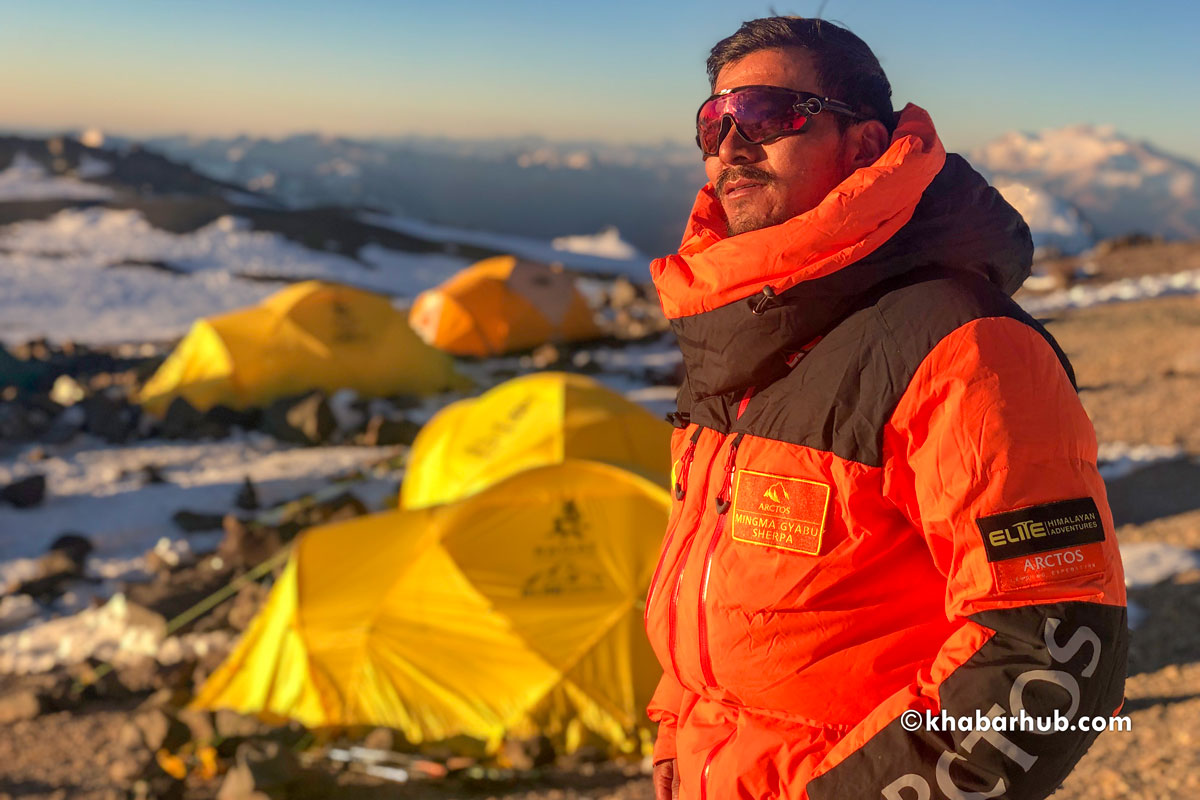
Born on May 16, 1989, in Taplejung, Mingma started his career as a porter in 2009. Full of enthusiasm and confidence, Mingma set on a mission to ascend the Everest in 2010 and succeeded in reaching the top of the world.
Talking with Khabarhub, Mingma recalled one of his neighbors, Dorje Khatri (died in 2014 due to the avalanche at Everest Base Camp), who encouraged him to climb the peak. “In fact, Khatri boosted my confidence,” Mingma said while recalling what Khatri had told him once: “Never look back”. In fact, Mingma never looked back. His only aim was to conquer the world’s tallest peak. And, he did it!
He, however, appealed to the government to categorize mountaineering guides and provide them with social security.
“Oh, in fact, I have no words to describe the feeling when I reached atop the Everest at the age of 19,” a cheerful Mingma recalls the ‘joyous’ moment.
Sharing what goes inside a mountaineer after conquering a peak, he said that summiteers become speechless for a moment. “You can’t express the moment once you set your feet there,” he quips.
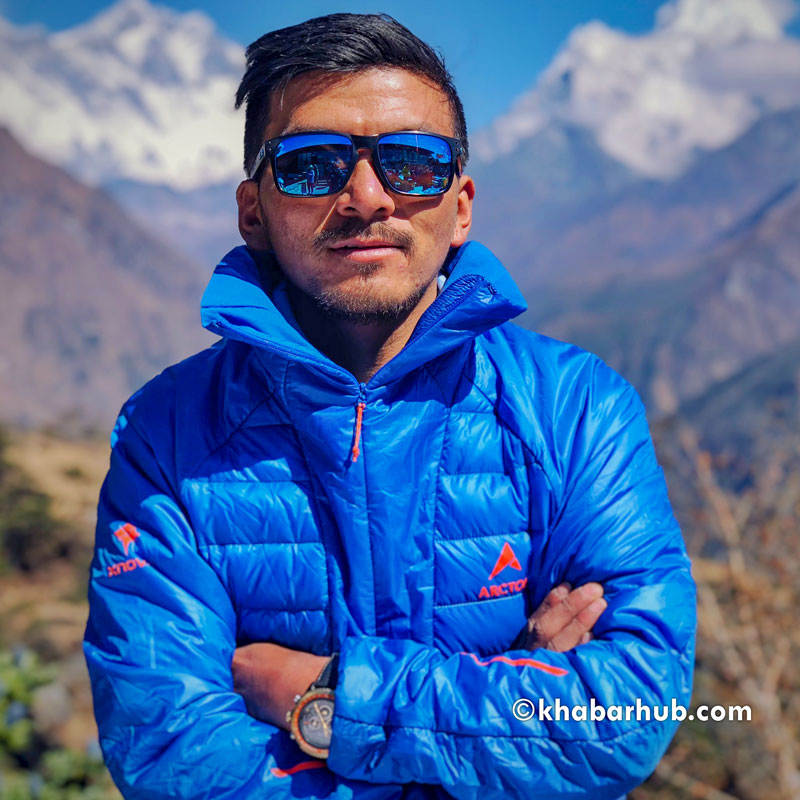
It was in 2016 when Mingma, along with a team of five Sherpas, organized a rescue operation at the height of 8,600 meters of the Everest. He reminisces the moment when after three unceasing hours of struggle, they found two climbers — Chetana Sahu, 43, from Odisha’s Cuttack district in India and Phurba Sherpa – who were struggling for life.
“Both of them were in a critical condition with their supplementary oxygen running out. We safely took them to the South Col, the sharp-edged col between Mount Everest and Lhotse. They were so gratified that they told us we gave them a new life,” Mingma recalls those moments with pride.
In the course of time, Mingma was honored with Piolets d’Or Asia Awards under the Sherpa category for his commitment to technical face climbing and positive environmental stewardship in the mountains. The award aims to encourage and inspire Asian mountaineers who achieved pure and visionary ascents. With the award, he was recognized as the Sherpa of the Year 2019.
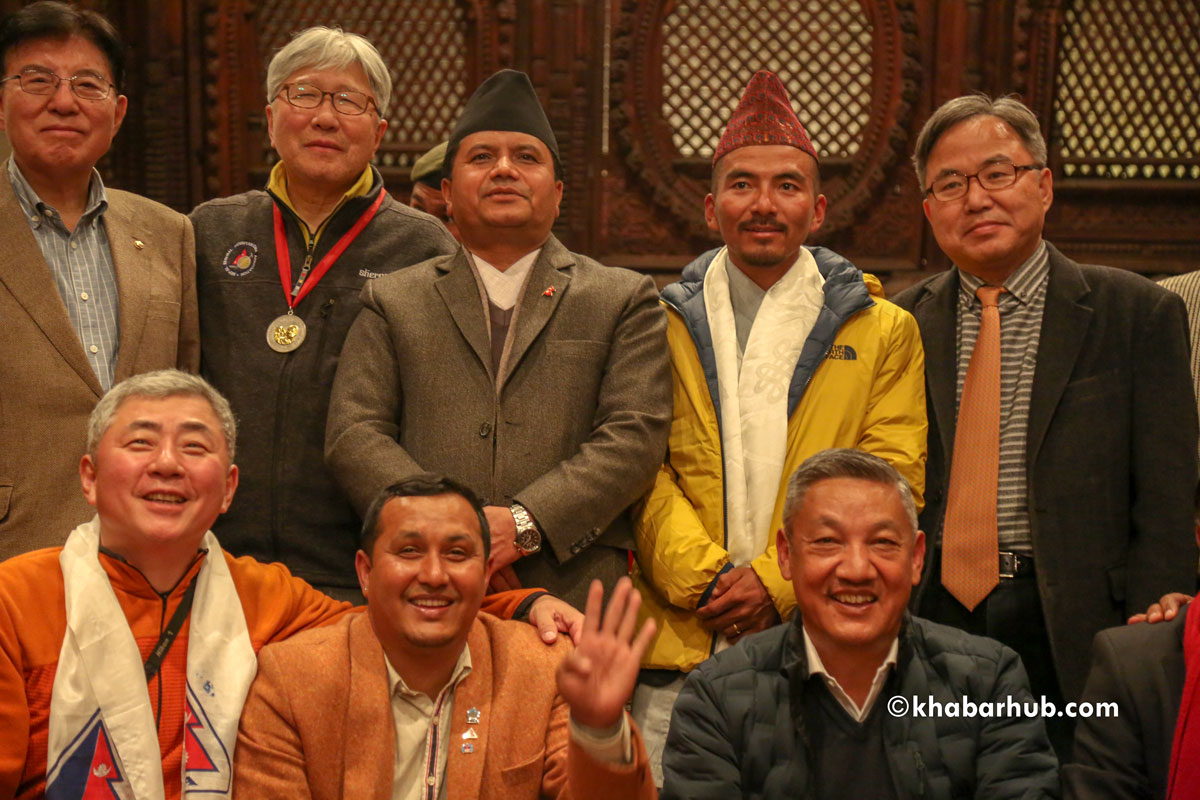
“There was no incident that made me look back or quit mountaineering. It was my dream and I have succeeded in all attempts I have so far made,” a contented Mingma told Khabarhub.
He, however, appealed to the government to categorize mountaineering guides and provide them with social security.
Mingma, however, is worried about the difficulties in climbing the Everest in recent times. “In fact, climbing the Everest has become tougher due to global warming,” he said, adding, “The Khumbu Icefall is melting faster due to global warming. Despite this, the climbing seems easy due to experienced guides and sophisticated equipment they use,” he shared.
Mingma claims that he is not climbing the mountains for records. His dream is to climb successfully 14 peaks and 7 summits.
In 2017, a British Gurkha soldier, Hari Budha Magar, who lost both his legs in Afghanistan, scripted history by successfully standing atop Mera Peak (6,476m) in the autumn climbing season. Magar became the first double amputee above the knee to climb the country’s highest trekking peak in the autumn season. Mingma had led Magar successfully to the peak.

Mingma says foreigners climb the mountains because of their interest, as well as to set a record. Mountaineers reply on the courageous Sherpas while climbing the Everest.
In the current year, Mingma successfully climbed Island Peak and is on the way to climb Mt. Annapurna (8,091m). He will then climb Mt. Dhaulagiri (8,167m), and Mt. Kanchanjunga (8,586m) in the same season. Likewise, he is also planning to climb four mountains of Pakistan.
Mingma claims that he is not climbing the mountains for records. His dream is to climb successfully 14 peaks and 7 summits.
KATHMANDU: Sometimes, records are made unknowingly. This happened in the life of Phurba Tenjing Sherpa – a proud recipient of two Guinness World Records.
On May 23, 2018, he climbed Mt. Everest with his siblings — Pemba Dorje Sherpa, Dawa Diki Sherpa, Phurba Thinley Sherpa – to set a record of the most number of siblings to ascend Mt. Everest concurrently. Did Phurba know that he was making a record by climbing with his siblings at the same time? “No, I only realized it later that we set a record,” he quips.
Born in 1988 at Rolwaling village in Dolakha, Phurba Tenjing started making a living as a porter at the age of 14. So far, he has guided a total of 23 Nepalis and a sizable foreigners to the peaks.
This young Sherpa also holds the record of ‘Most siblings to have climbed Everest” at different times. Seven out of the 11 offspring from Chhiring Nurbu Sherpa and Kimjung Sherpa have reached atop the Everest.

Photo: Thaneswar Guragai
Interesting! Phurba’s siblings, including Pemba Gyalzen Sherpa, Phurba Thundu Sherpa, Pemba Dorje Sherpa, Nima Gyalzen Sherpa, Dawa Diki Sherpa, Purba Thile Sherpa, and Phurba Tenjing have conquered the Mt. Everest. “Wasn’t that a moment to cherish?” he queries with a broad smile.
Born in 1988 at Rolwaling village in Dolakha, Phurba Tenjing started making a living as a porter at the age of 14. So far, he has guided a total of 23 Nepalis and a sizable foreigners to the peaks.
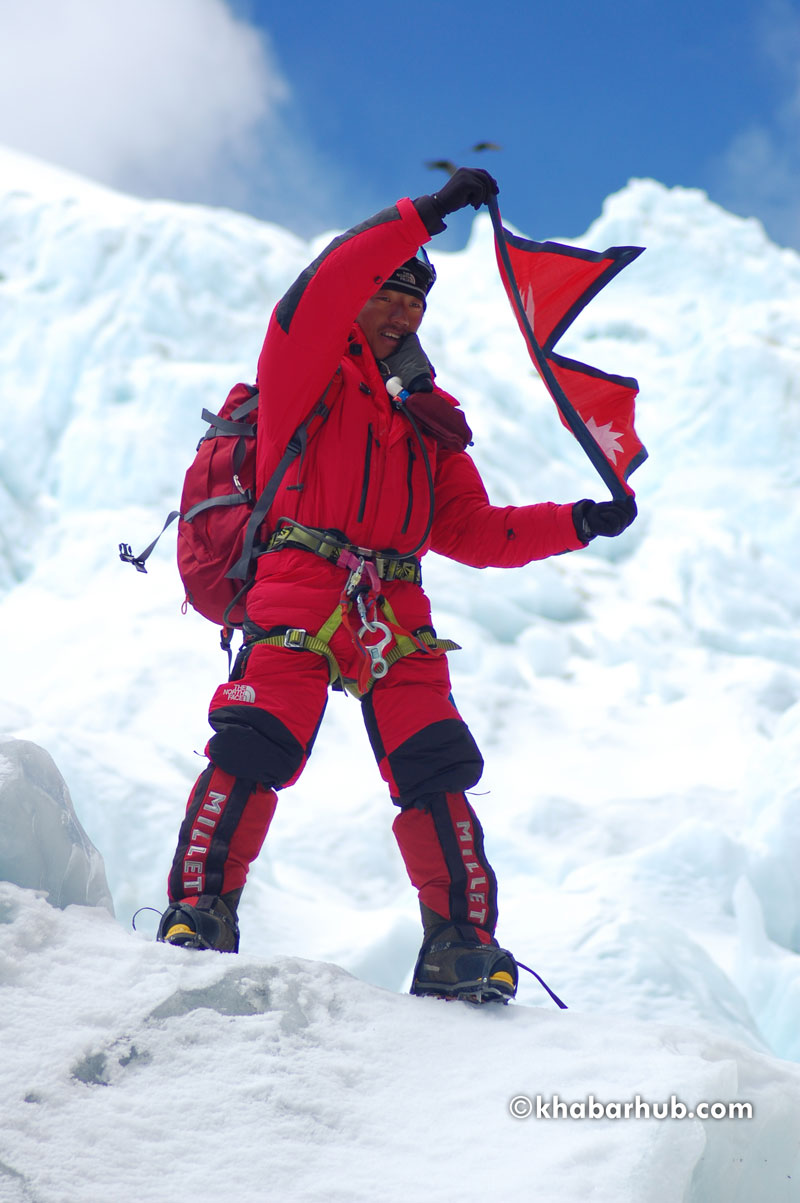
Photo: Thaneswar Guragai
In 2008 and in 2017, this enthusiastic Sherpa ascended the Everest twice in three days. He descended to Camp IV and climbed the peak again.
He reminisces those days when several porters came to the village from the lowlands and failing to cross the Tashi Lepsa Pass (5,750 m) to reach Lukla – a five-day trek — due to high altitude. “I then started working as a porter at a tender age,” he recalls. Barely three years working as a porter he made up his mind to give a try to climb the world’s highest peak. “I was able to gather the confidence, and finally I made it. I climbed the Everest from the Tibetan side with my eldest brother Pemba Dorje Sherpa in 2007,’ he told Khabarhub.
Before this, he made a failed attempt to ascend the Mt. Pumori (7,161 m) at the age of 16 years. “I could not reach the top due to an avalanche,” he recalls.
Sherpa community, he says, respect the mountains as God since they grow up in the lap of the mountains.
“We revere mountains as God like the way we love and respect our mothers,” he said.
Since then, there has been no looking back. “This boosted my morale,” says Phurba.
In 2008 and in 2017, this enthusiastic Sherpa ascended the Everest twice in three days. He descended to Camp IV and climbed the peak again.
He has also conquered Mt. Manaslu thrice. In 2011, he climbed Mt. Ama Dablam within ten days and stayed at the summit for a staggering 10 hours.
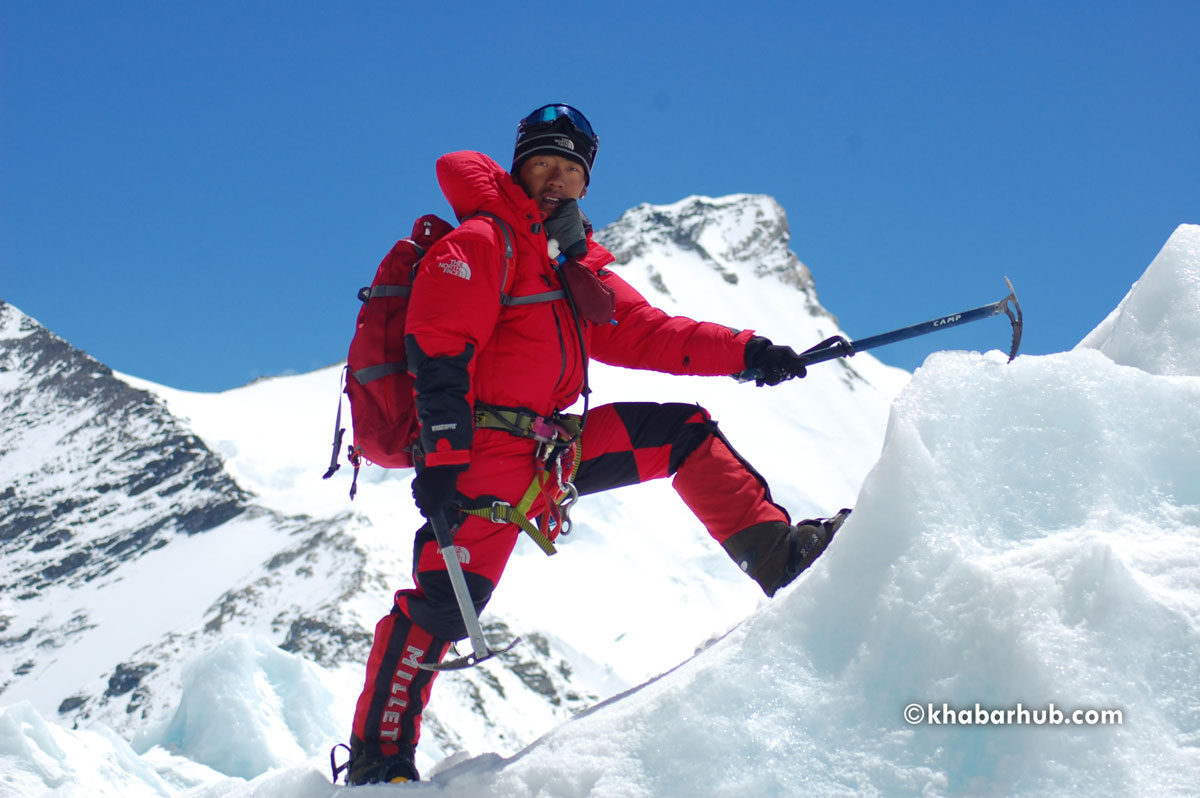
Photo: Thaneswar Guragai
Ask him what did he earn so far, and pat comes the reply: “The positive impression as well as the recommendation of being a hospitable guide and a supportive porter is what I have earned in all these years.”
Sherpa community, he says, respect the mountains as God since they grow up in the lap of the mountains.
“We revere mountains as God like the way we love and respect our mothers,” he said.
Phurba Tenjing, however, is saddened at the way the government has ignored the plights of Sherpa who guide mountaineers to the peak safely. “We feel overlooked,” he laments.
An adage, which he is accustomed to hearing from mountaineers, makes his chest broader. Consider this: “Everest can be conquered without oxygen, but not without the Sherpas.” What could be more heartening than this for Phurba and rest of the Sherpa porters and guides?
He is equally worried over the dwindling number of Sherpas in the mountaineering sector. “Youngsters have started losing interest in mountaineering as they are more options available. They prefer going abroad,” Phurba told Khabarhub.
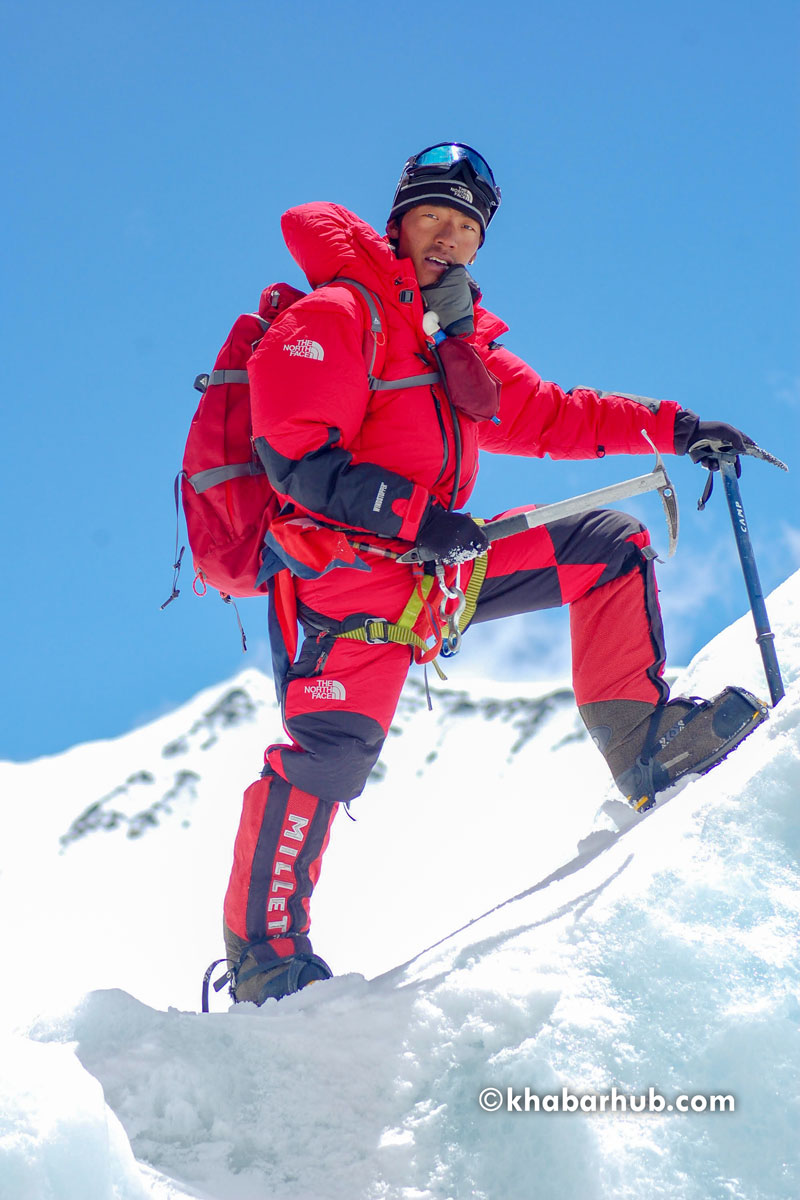
Photo: Thaneswar Guragai
In the course of the conversation, Phurba gives a sad expression while reminiscing a horrific moment when an avalanche hit the Everest in the 2015 devastating earthquake that left him with a fractured backbone. “I never thought that I would survive,” he said adding, “Even now, I get scared while ascending.”
An adage, which he is accustomed to hearing from mountaineers, makes his chest broader. Consider this: “Everest can be conquered without oxygen, but not without the Sherpas.” What could be more heartening than this for Phurba and rest of the Sherpa porters and guides?
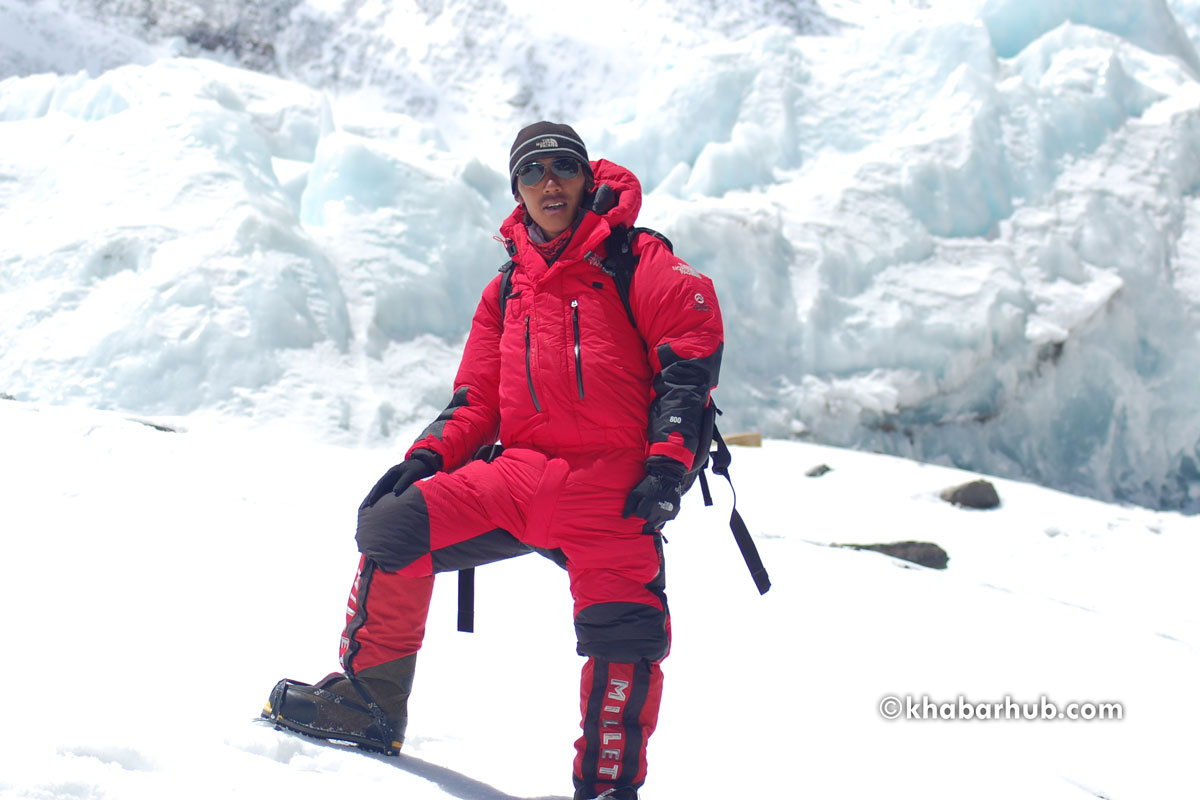
Photo: Thaneswar Guragai
By saying so, he also recalls the moment when he guided Rosha Basnet, a journalist, to the summit. “Rosha appreciated my support,” he says adding, “When God is always with us, why we need to fear?”
(With inputs from Thaneswar Guragai)
KATHMANDU: Kathmandu has been placed in the 19th position out of 25 best-rated destinations in the world, according to TripAdvisor’s annual Travelers’ choice.
The winners were determined based on algorithm that analyses the millions of reviews and ratings for hotels, restaurants and attractions collected in a single year from TripAdvisor travelers worldwide.
London bags the first spot this year, followed by Paris while Rome comes third in line among top-rated holiday destinations.
Trip adviser’s top-rated holiday destinations
1. London
2. Paris
3. Rome
4. Crete
5. Bali
6. Phuket
7. Barcelona
8. Istanbul
9. Marrakech
10. Dubai
11. Prague
12. Siem Reap
13. New York City
14. Jamaica
15. Hanoi
16. Tokyo
17. Playa del Carmen
18. Lisbon
19. Kathmandu
20. Jaipur
21. Hurghada
22. Hong Kong
23. Cusco
24. Sydney
25. Tel Aviv
KATHMANDU: Government declared 2020 as the Visit Nepal Year with the objective of boosting tourism in Nepal. Everest, the highest snow-capped mountain in the world is the major tourist attraction in the country.
However, thanks to the impact of the climate change, the Everest may not be as appealing due to increasing rate of melting snow. Garbage piled up in the Everest pose another biggest threat to its survival.
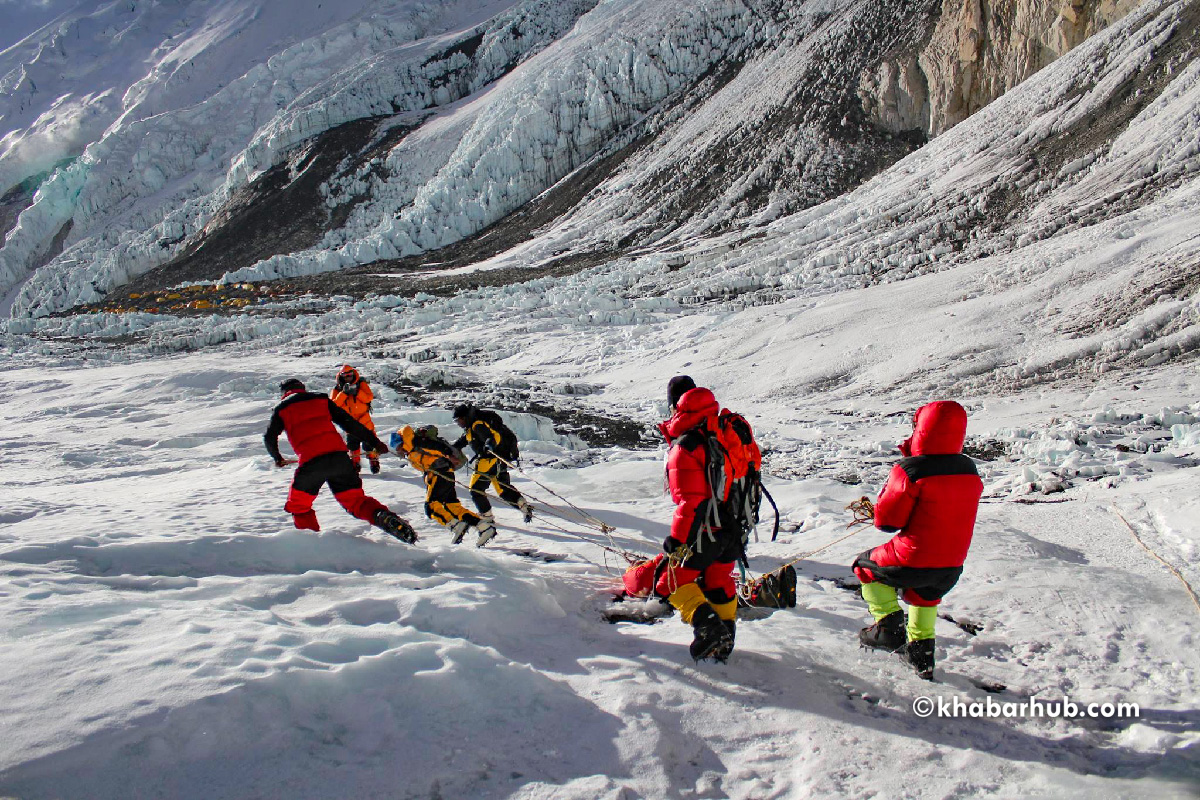
Not only for the mountain climbers, around 50 percent of tourists visit Nepal to have the glance of the snow-capped Himalayas, according to a data maintained by Nepal Tourism Board (NTB).
However, these Himalayas may not retain the same alluring look thanks to snow melting as an impact of the global warming, according to PK Sherpa, a tourism entrepreneur and a mountain climber.
Sherpa has been running a campaign to clean the Everest since 2010. As of now he collected six dead bodies as well as a huge amount of garbage scattered in around the Everest, according to PK.
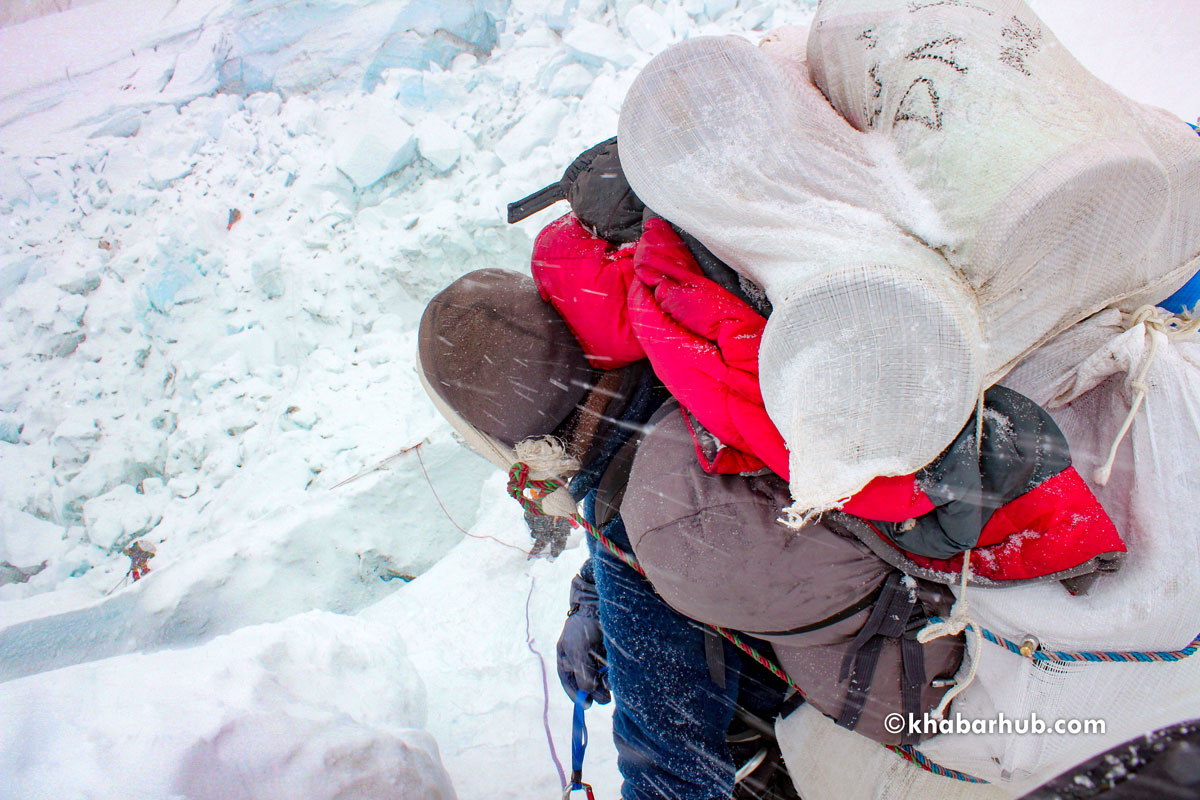
Garbage types in the Everest
Climbers are the main source of pollution in the Everest. Since everybody is conscious to save his/her life, they throw away anything that is a burden. Besides, some climbers die in terms of the climb. Garbage since the first human successful attempt to conquer the Everest in 1953 remain piled up in the Everest. Beside dead bodies, garbage in the Everest include food packages, can bins, oxygen cylinders, EP gas, tents among others.
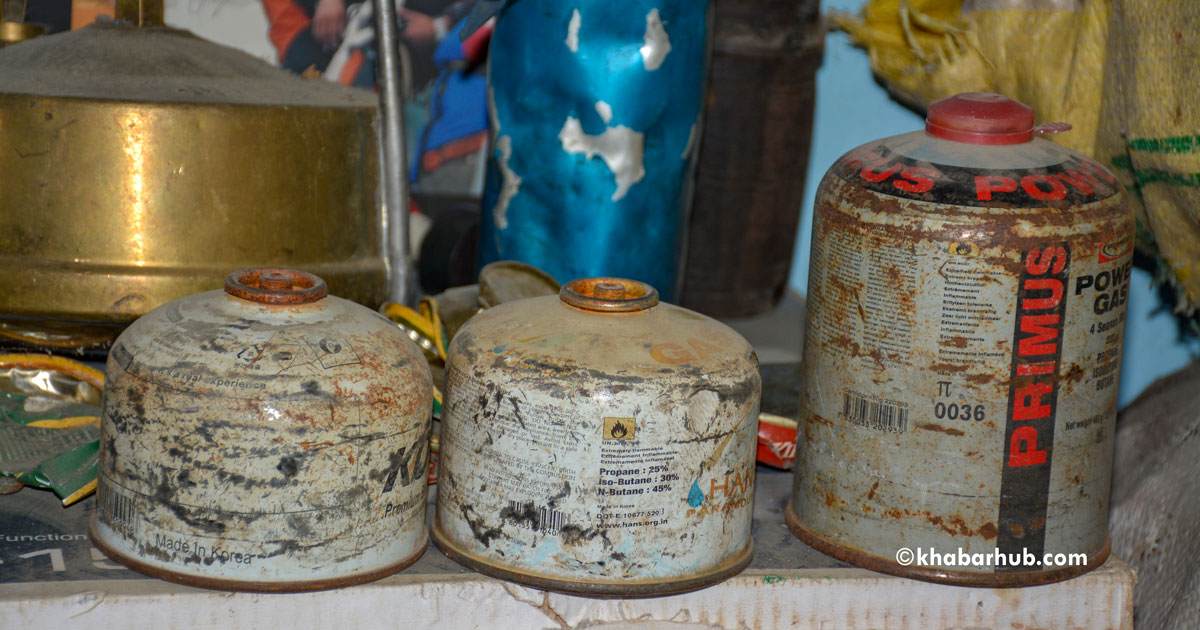
Everest is getting ugly
Even as the Everest still casts a majestic spell from a distance it is getting less charming to the climbers. Layers of garbage piled up in the Everest is getting visible due to melting snow. Sagarmatha Pollution Control Committee is working to clean the Everest. However, its activities are focused on the base camp only.
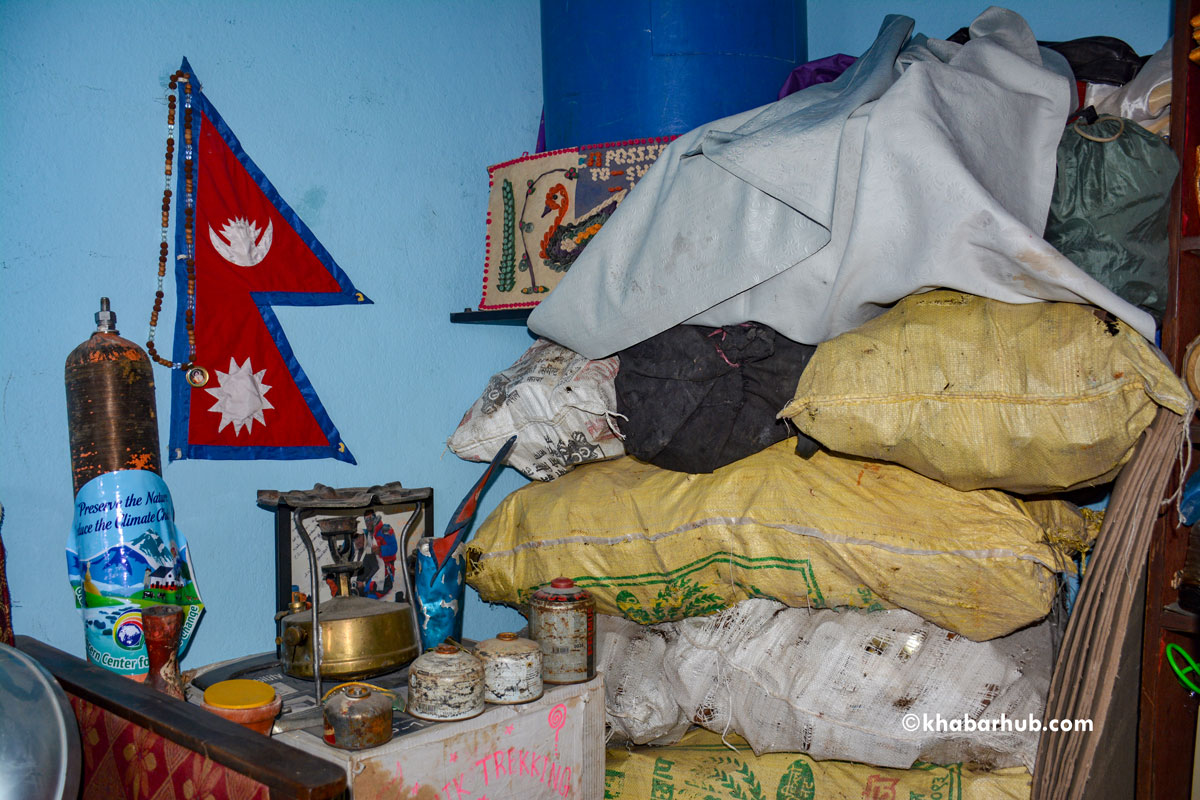
It is of urgent need to clean camp-2, camp-3 and camp-4 of the Everest, according to Sherpa. “Around 15 to 20 tons of the garbage remain piled up on the Everest above its camp-2. Even a regular cleaning will take some 10 years to rid Everest of the garbage,” says Sherpa.
In his first Everest cleaning campaign PK and his team comprising 20 members had collected five bodies and 18 tons of the garbage. Nepal Mountaineering Association in 2011 had collected over three ton garbage. It was at that time that Sherpa had collected one dead body from the Everest.
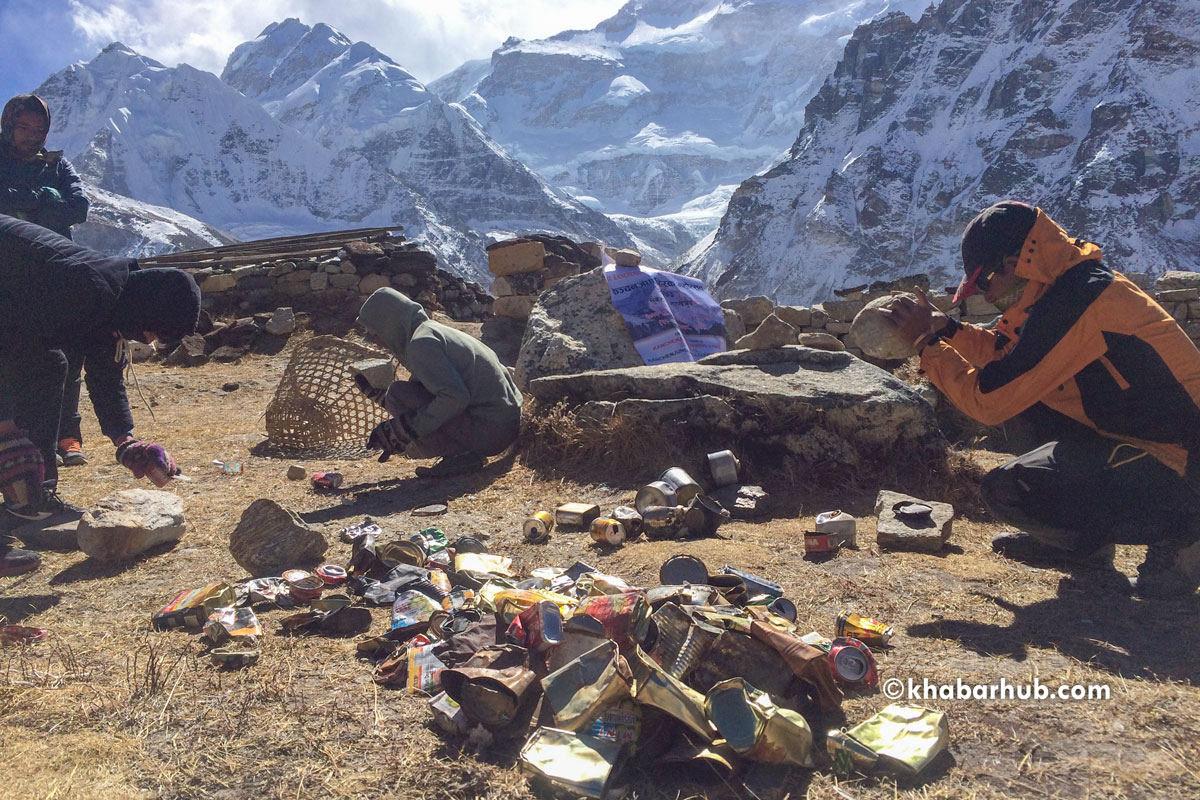
Sherpa who is after the Everest cleaning campaign plans to construct a museum out of the garbage materials collected from the Everest.
Cost incurred in scaling the Everest
The cost for climbing any Himalayas including the Everest is different for Nepali and foreign nationals. For Nepalese nationals, the cost comes to around Rs. 1,500,000 to Nrs. 5,00,000. If people climb the Everest, the cost shared by a person becomes low.
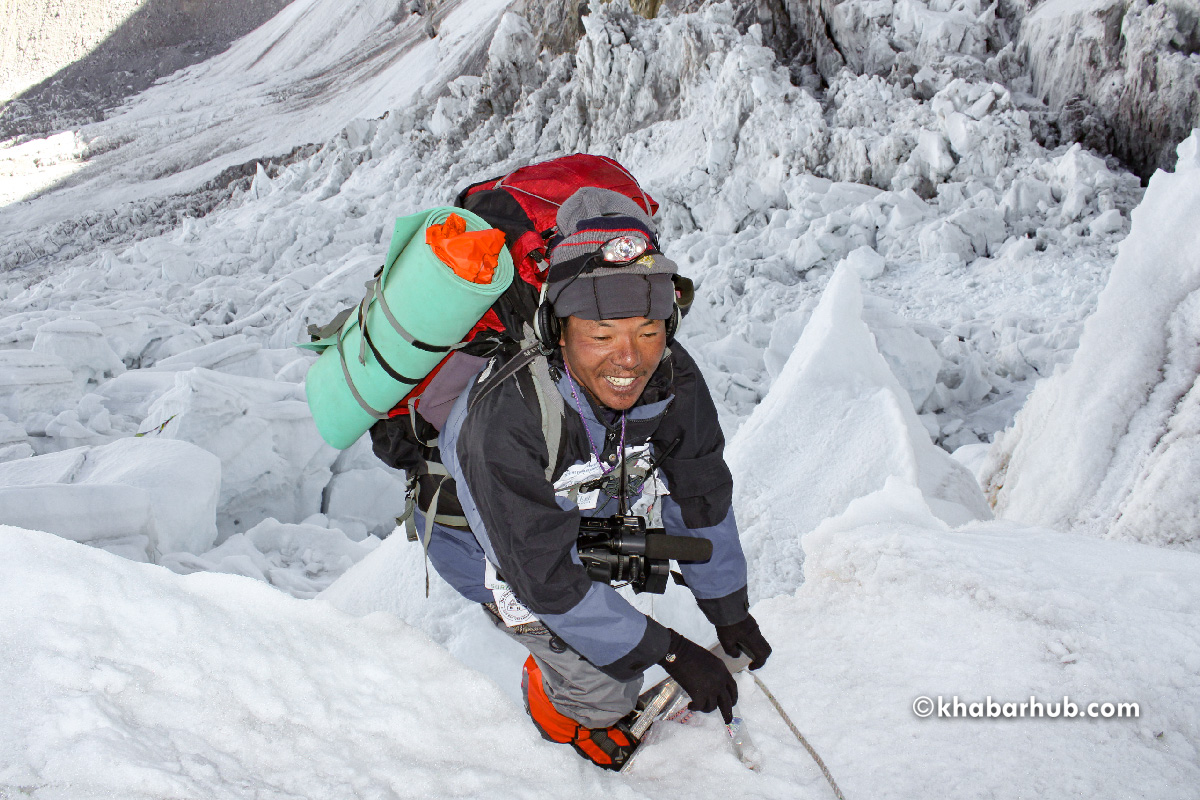
That is, if one climbs the Everest in a group of 10, per head cost comes to around Rs.10,0000 to Rs. 1,50,000.
KATHMANDU: Central zoo of the country has constructed new and advanced structures for animals. The zoo has been constructing a new module of shelter depending upon animals.
Lina Chalise, Information Officer at the Zoo said that a new shelter with air-conditioned facility is being built for the red panda. The construction of new homes for blue bull, jackal and the crane is in progress.
The visitors will have an opportunity to see the blue bull after the construction of the shelter for it. Besides, works to upgrade a walkway meant for visitors are underway. The Zoo has an area of six hectares. There are 1,219 wildlife of 127 species in the Zoo now.
Last year, the Central Zoo collected Rs 1.4 million from visitors. It charges Rs 50 per head under 12 as entry fee; Rs 100 for students; Rs 150 for public; Rs 220 for visitors from the SAARC and Rs 750 for visitors from other countries.
BANKE: The Banke National Park (BNP) has put a ban on the usage of elephants for personal purpose. The BNP has made the rule following the Act related to elephant management.
Yubaraj Ragmi, Chief Conservation Officer at BNP informed, “We have stopped leasing the park’s elephants after the government’s ban. They will be used only for tasks and activities of the Park and conservation area”.
The Park has four elephants at present and domestic tourists would be charged Rs 5,000 each for a ride of six hours. Likewise, the charge would be Rs 10,000 each for tourists of SAARC countries, and Rs 20,000 each for tourists of other foreign countries, said Bishnu Thapaliya, Information Officer at the BNP.
KATHMANDU: For adventure seekers and fun lovers, paragliding, which has come into operation at Chapakharka in Godavari, would be a perfect experience.
All one needs to do is to drive all the way to Godavari, which is 15 kilometers from Kathmandu, and then to Chapakharka, which is 5 kilometers from there.
The 15 to 30 minutes of floating in the air will give a lifetime experience at Rs 6,500 per flight from where one can see the entire Kathmandu Valley, the surrounding mountain peaks, and the green hills. However, a foreigner has to pay Rs11,300 for the same time.
The paragliding with an investment of around Rs30 million has been operated keeping in view the Visit Nepal 2020 campaign, which aims to attract over two million tourists.
Though the paragliding began last year in December, the service was disrupted due to various reasons.
According to Kathmandu Paragliding and Hand-gliding Pvt Ltd, the operators, some three hundred flights have been conducted so far. It operates 25 flights a day with six gliders.
The paragliding takes place from 2,100 meters above Godavari and the landing takes place at Rachantar, which is at an altitude of 1,600 meters.
CHITWAN: Preparation is underway to send samples of bodily part of dead rhinos abroad for laboratory tests in view of increasing incidents of unnatural deaths of one-horned in Chitwan National Park (CNP) and surrounding forest area.
The samples are to be sent abroad for necessary tests so as to find reason behind the death of the rare wild beast.
Twenty rhinos have been found dead as of now in the current fiscal. The Chitwan National Park has constituted a committee to put forth investigation into the death of rhinos due to natural reasons.
According to Gopal Ghimire, Information Officer at CNP, seven rhinos were found dead in the period of last one month.
Among the rhinos dead due to natural reasons, 28 were found at CNP premises and one in the area under the District Forest Office. Ghimire further shared the rhinos found dead in CNP due to other reasons except the natural ones were at the age group of 15-25. An average of rhino is 60 years. Bed Kumar Dhakal, Chief Conservation Officer, CNP said preparation is being made to send samples of rhinos, including four dead for laboratory test with the rise in unnatural death of rhinos.
KATHMANDU: A total of 645 one-horned rhinos exist in Nepal, according to the record maintained by the Department of National Parks and Wildlife Conservation (DNPWC).
Chitwan National Park (CWC) is the main habitat of one-horned rhinos numbering to 605 rhinos.
Similarly, Bardia National Park has 29, Suklaphanta National Park has eight while Parsa National Park has three rhinos in Nepal. With the current success in rhino conservation, conservationists are hopeful of recovering the rhino population to a historic level.
According to the DNPWC, the number of rhinos is growing by 5% per year.
CWC is now saturated with rhinos. Those trans-located to Suklaphant and Bardiya National Park are still low in number for several reasons. Infant mortality and fighting to the death in terms of courting are some of the reasons responsible for the low rhino population.
With the current success in rhino conservation, conservationists are hopeful of recovering the rhino population to a historic level.
So far, Nepal has donated 28 rhinos including 2 pairs of rhinos to China in 2018.
Despite Nepal making headway in the fight against rhino poaching and marking zero poaching years, five times since 2011, authorities have witnessed a major setback in conservation efforts of late.
As many as 25 one-horned rhinos have died according to the report unveiled by DNPWE in the year 2017/2018.
During the year, only one was killed by a poacher while the others died of natural reasons.
In Nepal, Rhinos are mainly poached for their horns believed to have medicinal properties for traditional medicine.
Horns are also used as trophies and decorations to display social status. In Nepal, rhinos had hugely declined from 1000 to 100 during the 1950s due to habitat destruction and heavy poaching.
The number which was gradually recovering to 612 at one time in the past went down to 400 again due to poaching and a decade long Maoist insurgency (1990-2006).
KATHMANDU: A team of tourism entrepreneurs from Pokhara are all set to commence a tourism promotion tour to the Northeast of India from February 5 to 10 this year. The team comprising Tourism Board (NTB) officials and Pokhara Tourism Council (PTC) executives were scheduled to visit Siliguri and Guhawati among other places.
The visit is taking place in line with the MoU that was signed between the Eastern Himalayan Travel and Tour Operators Association, and Pokhara Tourism Council (PTC) some five years ago to promote the tourism of Pokhara and Northeast India at the initiative of Nepal Tourism Board.
PTC President Chiranjivi Pokharel shared the Nepali tourism entrepreneurs would be taking part in various tourism promotion activities during their visit to lure a large number of Indian tourists to Nepal. Pokharel was of the view that the visit would contribute in attracting and retaining the Indian tourists in Nepal.
Thousands of Indian tourists from Siliguri, Dooars, Gangtok, Darjeeling, Manipur, West Bangle, Assam, Sikkim, Meghalaya and Mizoram reach to Nepal via Kakadbhitta especially to visit shrines like Pashupanti Nath and Mukti Nath, according to him. The Pokhara’s entrepreneurs will also take part in Bengal Travel Mart where a press conference will be held, shared NATTA Western Region Association’s First Vice-President Sanjaya Kanta Sigdel.